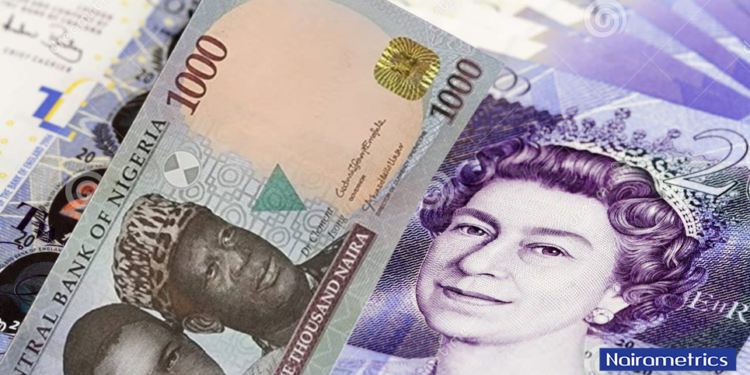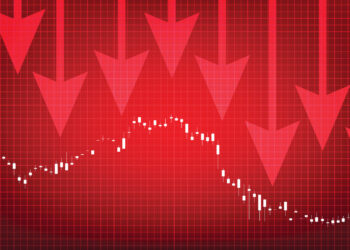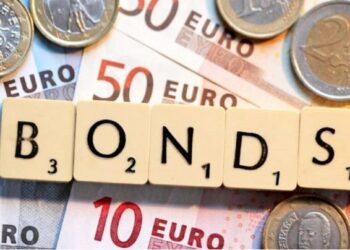The naira appreciated against the British pound as global currency markets remained volatile. The British pound ended Wednesday’s trading session at N1,945/£ in the official market.
The Central Bank of Nigeria’s (CBN) decision to float the naira and harmonize multiple exchange rates has improved sentiment in the real sector. Recent price movements indicate that the Nigerian currency has remained in a consolidation phase in the unofficial market, ranging between N1,920/£ and N2,100/£ this month.
Improvements in foreign exchange inflows and moderation in Nigeria’s inflation readings could contribute to the naira’s short-term bullish momentum. Inflation in Nigeria decreased for the fifth consecutive month, providing some respite to citizens struggling with the persistently high cost of living.
The GBP/NGN pair has seen a significant upward trend over the past five years (2021–2025), while the naira has depreciated by more than 500% overall due to Nigeria’s economic challenges, including inflation and foreign exchange shortages.
The CBN’s rate corridor and its efforts to promote non-dollar payments have supported the naira’s recovery. The Nigerian currency has been on a bullish run amid a combination of stronger foreign exchange (FX) inflows and persistent demand pressures in both the official and parallel markets.
In recent weeks, the naira has demonstrated resilience, recording a 10.56% appreciation over the past 12 months and a 2.45% gain over the previous month against the U.S. dollar.
Daily fluctuations, however, still occur, driven by speculative trading, domestic liquidity dynamics, and the global strength of the greenback.
British Pound Sterling Holds Firm in Global Markets
The British pound strengthened against most major currencies in the global foreign exchange market.
The pound’s value continues to rise even as traders increase their bets on further interest rate cuts by the Bank of England (BoE) this year. The BoE is expected to lower interest rates by 46 basis points (bps) in its two remaining monetary policy meetings for 2025.
Dovish bets on the BoE increased following the release of UK labor market data for the three months ending in August. The ILO Unemployment Rate rose to 4.8% on Tuesday, while Average Earnings Excluding Bonus cooled to 4.7% year-on-year, the lowest level since May 2022. The weaker job data strengthened expectations of additional interest rate cuts as inflation continues to slow.
During a speech at a Washington event organized by the Institute of International Finance (IIF), BoE Governor Andrew Bailey acknowledged the slowing UK economy.
The pound sterling extended its recovery from Tuesday, closing around $1.3370 against the U.S. dollar (USD). As the dollar weakened following remarks by members of the Federal Open Market Committee (FOMC) — including Federal Reserve (Fed) Chair Jerome Powell — about labor market concerns, the GBP/USD pair rebounded sharply.
The U.S. Dollar Index (DXY), which measures the dollar’s value against six major currencies, fell 0.25% to about 98.8 points at the time of writing. Powell said on Tuesday that although the economy remains on a “firmer trajectory than expected,” the U.S. labor market is still stuck in its “low-hiring, low-firing doldrums” through September.
He added, “There is some tension with the labor market data because the economic activity data is unexpectedly positive.” Fed President Susan Collins and Fed Governor Michelle Bowman separately expressed support for the new policy direction while cautioning about labor market risks.
The CME FedWatch Tool indicates that traders now see a 94.6% probability that the Fed will lower interest rates by 50 bps, to 3.50–3.75%, over the rest of the year.
Ongoing trade tensions between the U.S. and China have also weighed on the U.S. dollar. Market participants believe China responded to U.S. tariffs by imposing additional port fees on ocean shipping companies that transport goods ranging from holiday items to crude oil.





















